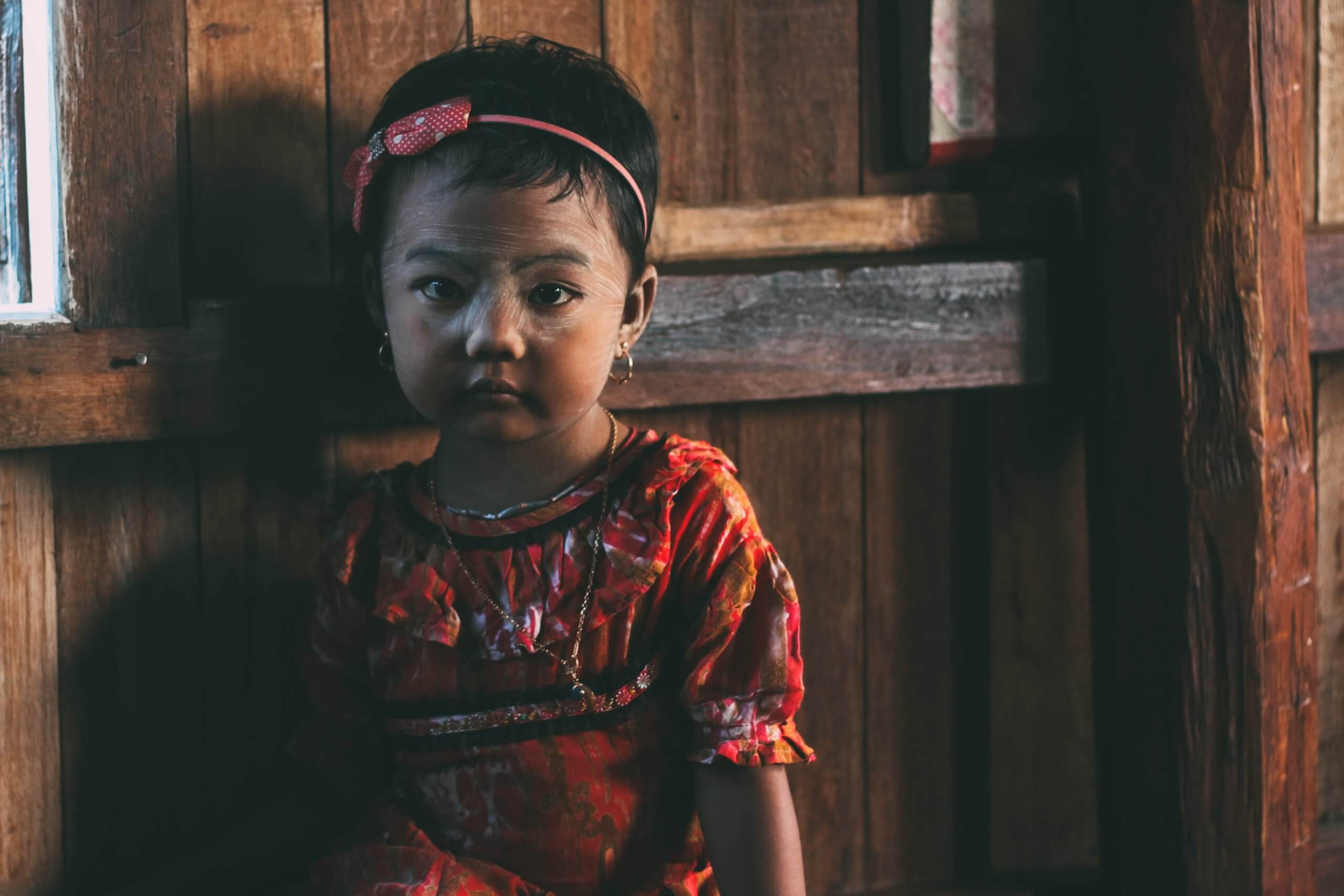
It shouldn’t be necessary to publically point out that hating people because they’re Asian is unacceptable, and yet here we are. In the past few days alone, Jeremy Lin was called “coronavirus” by another player during a basketball game, Alexi McCammond had to resign as the editor of chief of Teen Vogue for Tweets she made in college disparaging Asians, and most horrifically someone in Atlanta murdered 8 people at massage parlors in a hate crime targeting Asian women.
While racism against Asians in America isn’t something new, given how the pandemic has been used as an excuse for scapegoating, at this moment it’s especially important for brands to speak out against racism directed at Asian people. ListenFirst has identified the 7 ways that brands are most frequently and effectively spreading that message against hate on social media.
#1. Express Solidarity
The most frequently used tactic used by brands on social media to address xenophobia and discrimination against Asians is to publically state they stand with the Asian American and Pacific Islander community. Brands that shared these types of messages include SalesForce, Allstate, Buffy, Xerox, Kroger, Yum! Brands, ColourPop, Ilia Beauty, Ubisoft, and Walmart. It doesn’t take much for companies to post denounce violence and express empathy, and taking that step fosters a more inclusive environment.
#2. Direct People To Specific Resources
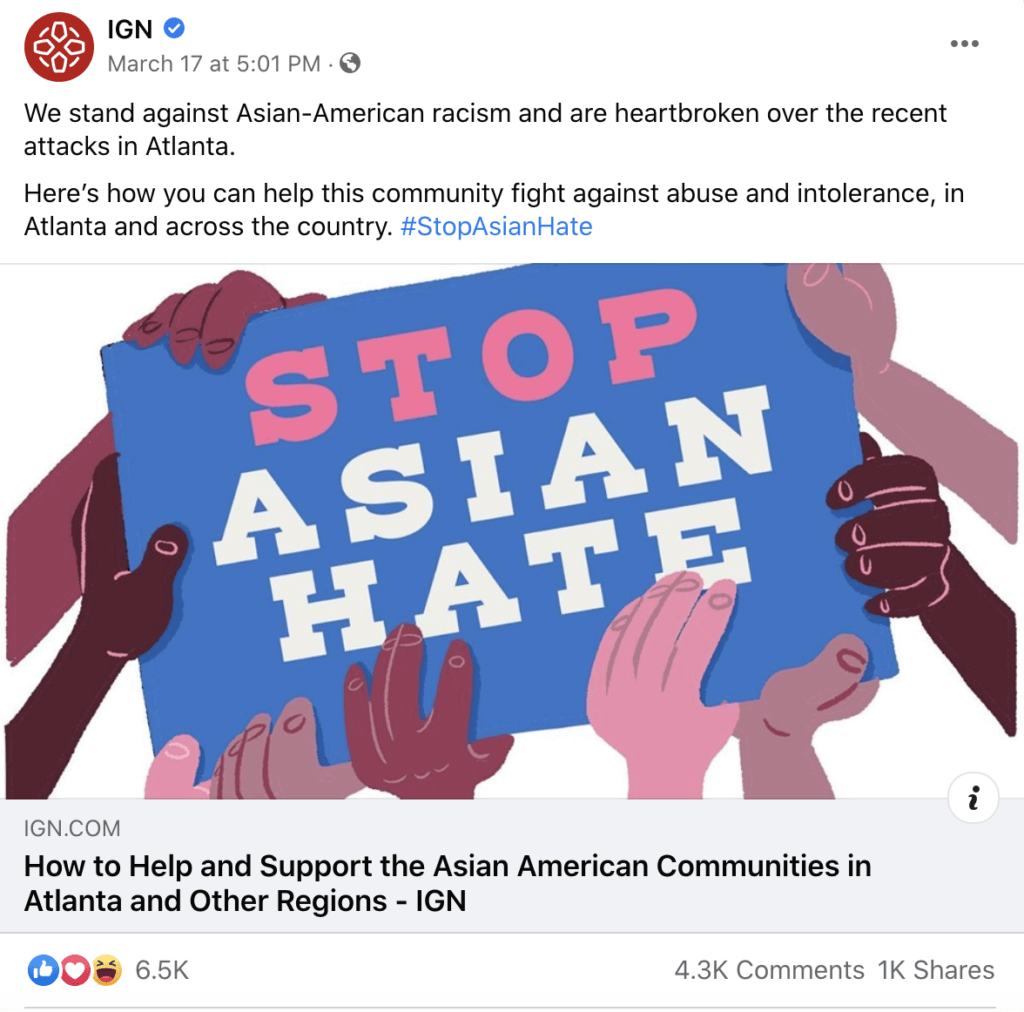
Another popular tactic is including a call to action, directing the audience either to a place where they can take a specific step or learn more information. Examples of brands using this form of outreach include IGN linking to a blog post they wrote about how to help Asian American Communities in Atlanta, Hervé Léger directing people to StopAAPIHate.org to report hate crimes, and Neutrogena sharing a variety of websites and social media accounts to follow for more information. Overall, brands have been most likely to advise readers to visit StopAAPIHate.org for more information, with IPSY, Morphe, OleHenriksen and Fossil among those sending over their audience.
#3. Lend Your Platform To Asian Voices
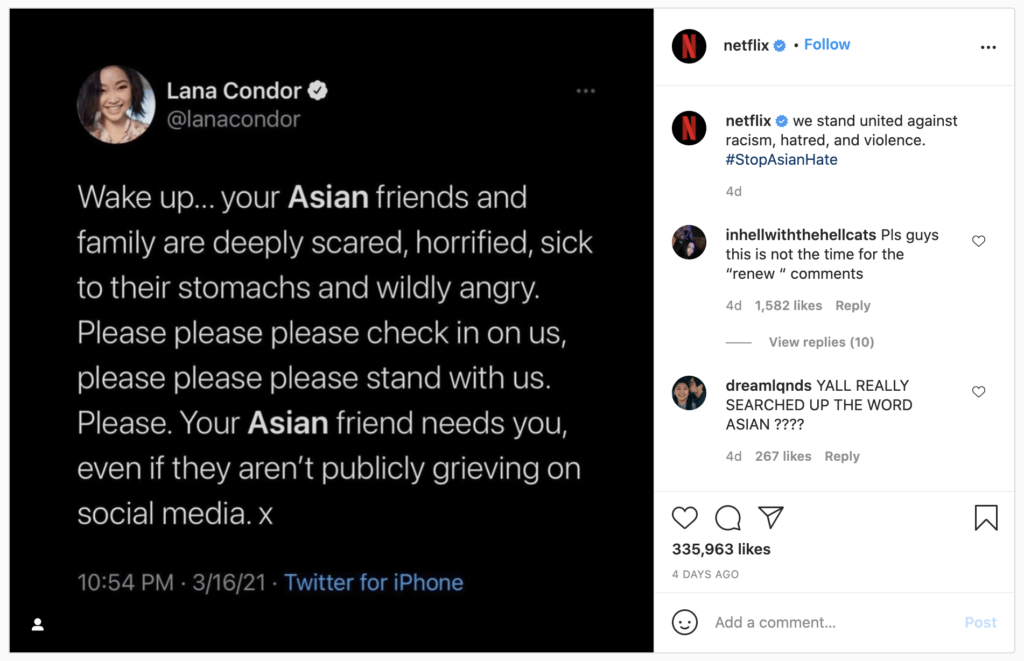
When people who have been targeted by anti-Asian discrimination or are at risk of it happening to them speak out, it puts a human face on what can otherwise feel like an abstract issue. Brands amplifying Asian voices on the their social channels around this issue include ESPN sharing a screenshot of a Tweet from Jeremy Lin, Netflix sharing a message from actress Lana Condor that your Asian friends need you even if they’re not publicly grieving on social media, and the Drew Barrymore Show posting an interview with actress Ashley Park about the attacks on the AAPI Community on YouTube.
#4. Donate Money
Giving money to nonprofits advocating for the rights of the greater AAPI community not only is giving to an important cause in a time of need, it also reinforces for the social media audience how seriously your brand takes the issue of stopping the spread of anti-Asian racism. Brands who have announced such donations on social media include Playstation contributing to Stop AAPI Hate, Banana Republic and Gap giving to both Stop AAPI Hate and National CAPACD, Etsy giving $500,000 to the Asian Pacific Policy and Planning Council and Asian Americans Advancing Justice, and Target contributing to the Asian American Justice Center.
#5. Share Specific Data Points
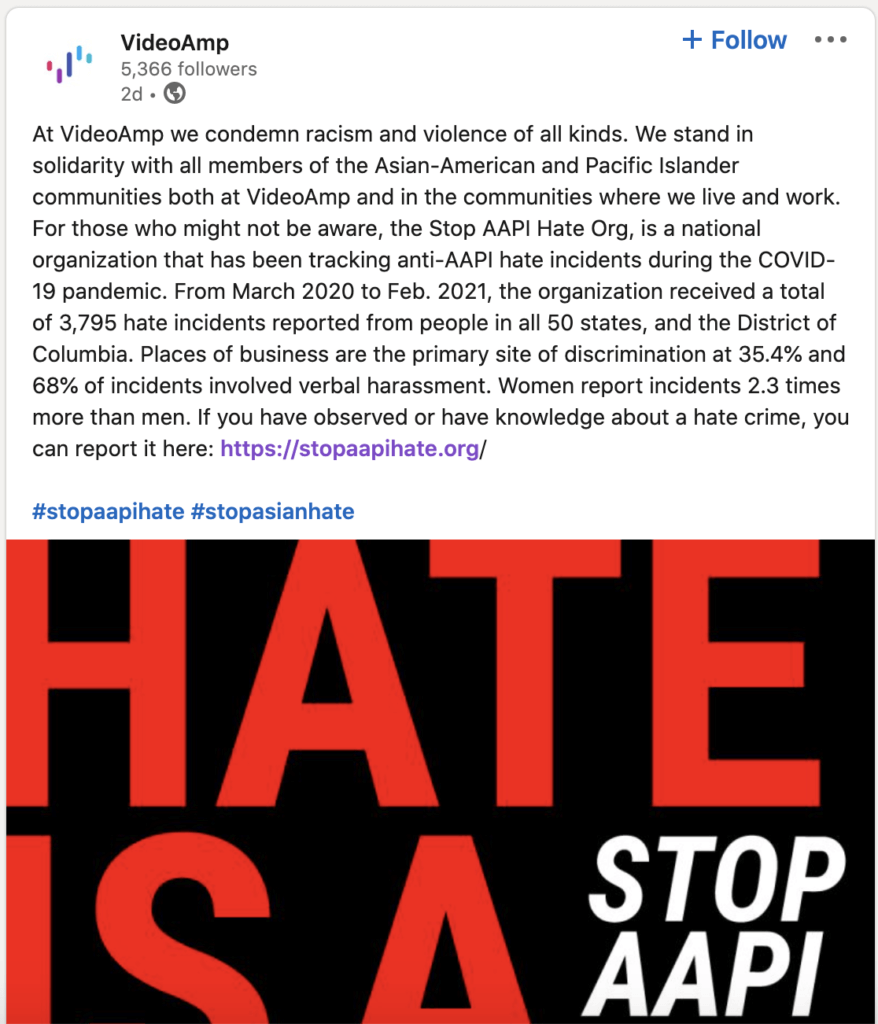
Sharing hard data is an extremely effective way to draw attention to the urgency of the problem. For example, Pigeons & Planes pointed out a report that Anti-Asian Hate Crimes rose nearly 150% in major U.S. cities last year while VideoAmp talked about how from March 2020 to Feb. 2021, Stop AAPI Hate received a total of 3,795 hate incidents reported in the United States.
#6. Share A Personal Connection
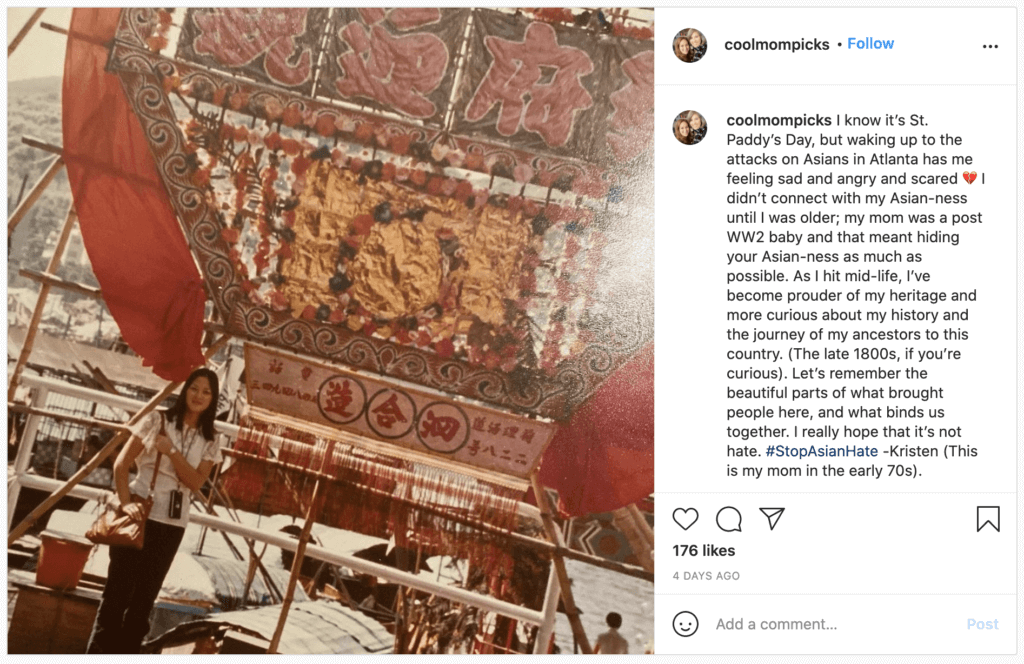
Company owners or employees of Asian or Asian-American descent who share their personal feelings and stories about recent events, connect to their audience and make the message against hate resonate more. For example, Cool Mom Picks publisher Kristen Chase shared how her mom was a post WW2 baby who felt the need to hide her Asian-ness as much as possible while Tatcha founder Vicky Tsai expressed how heavy her hear felt about the Atlanta attack, as the daughter of Taiwanese immigrants and the mother of an Asian child. Being Asian, is not the only way that attack struck people personally, for instance, Delta denounced the hate attack in Atlanta which as they pointed out is also their hometown.
#7. Call For Better Representation
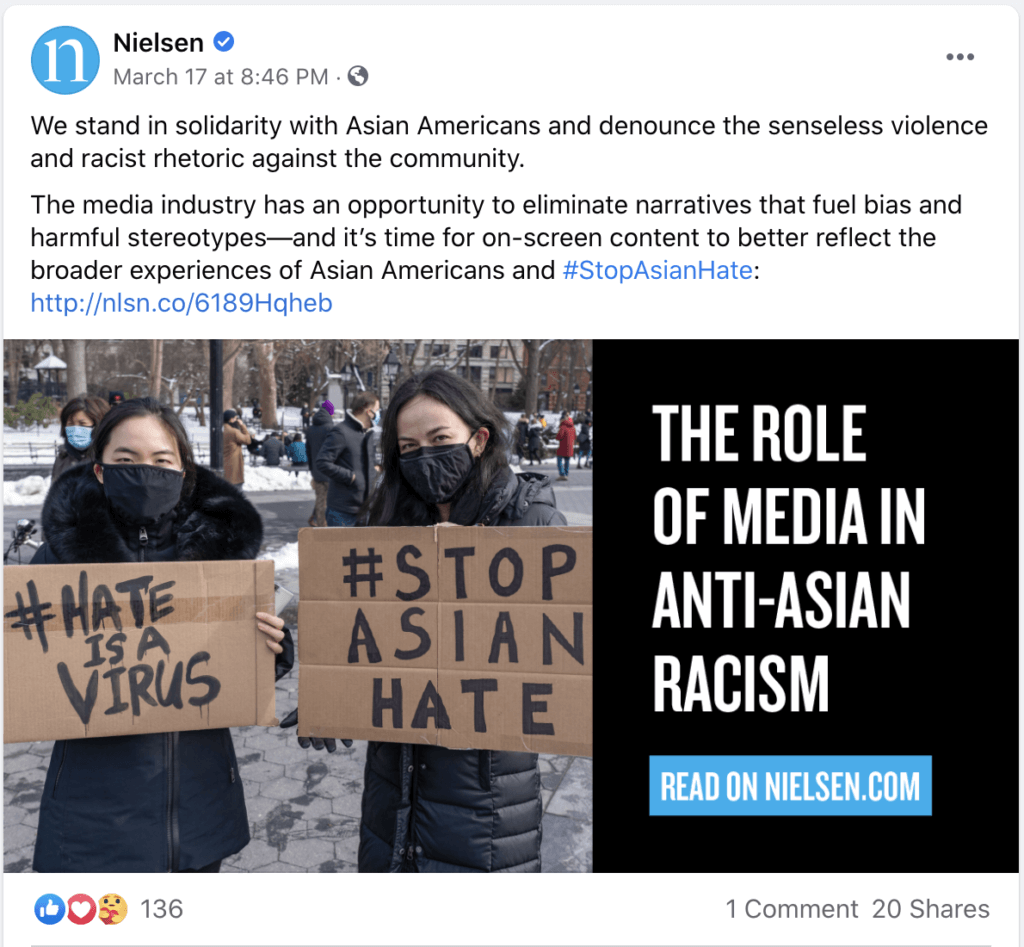
Nielsen made the great point that how Asians are portrayed in the media, negatively contributing to narratives that involve harmful stereotypes. For example, TV has a tendency to portray Asian characters as “good immigrants” that are simply “hard working” or “good for the economy”. While that may be well intentioned, those stereotypes lack depth and feed into the “perpetual foreigner” bias. Better reflecting a broader range of Asian American experiences in TV and film can only help combat anti-Asian stereotypes.


